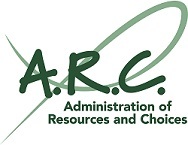Loan modification can help you stay in your home by working with your lender to change the terms of your loan. It’s different from a refinance because you aren’t getting a new loan. Your current lender is working with you to change the terms of your loan.
A homeowner qualifies for a loan remodification by falling at least one month behind on a mortgage payment or being about to miss a payment. You’ll have to provide your lender with proof of a financial hardship, such as sudden tax increases, job loss, divorce, or death of an income-providing member of the family. In order to qualify, you must use the home as a primary residence.
Types of Loan Modifications
There are a few different kinds of loan modification, and the one you can access will depend on the type of loan you have. Loan modification for FHA, conventional, USDA, and VA loans all extend the loan term to 40 years. Adding ten years to the life of the loan increases the amount of total interest you will pay on your home, but reduces your monthly payment. Avoid interest-only loan modifications or ones that include a balloon payment or penalties.
Unsure of what kind of loan modification makes sense for your situation? Talk to one of A.R.C.'s HUD-Certified Housing Counselors today.

